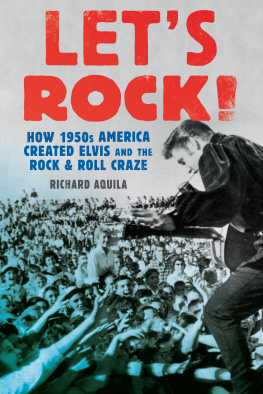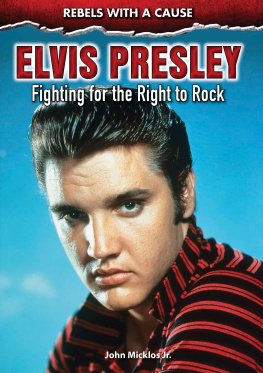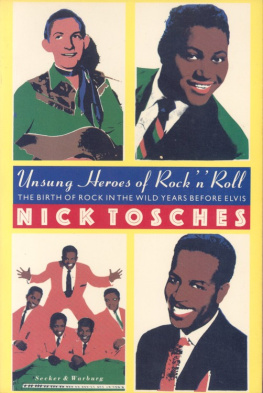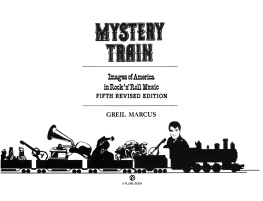Richard Aquila - Lets Rock!: How 1950s America Created Elvis and the Rock and Roll Craze
Here you can read online Richard Aquila - Lets Rock!: How 1950s America Created Elvis and the Rock and Roll Craze full text of the book (entire story) in english for free. Download pdf and epub, get meaning, cover and reviews about this ebook. year: 2012, publisher: Rowman & Littlefield Publishers, genre: Politics. Description of the work, (preface) as well as reviews are available. Best literature library LitArk.com created for fans of good reading and offers a wide selection of genres:
Romance novel
Science fiction
Adventure
Detective
Science
History
Home and family
Prose
Art
Politics
Computer
Non-fiction
Religion
Business
Children
Humor
Choose a favorite category and find really read worthwhile books. Enjoy immersion in the world of imagination, feel the emotions of the characters or learn something new for yourself, make an fascinating discovery.
- Book:Lets Rock!: How 1950s America Created Elvis and the Rock and Roll Craze
- Author:
- Publisher:Rowman & Littlefield Publishers
- Genre:
- Year:2012
- Rating:3 / 5
- Favourites:Add to favourites
- Your mark:
- 60
- 1
- 2
- 3
- 4
- 5
Lets Rock!: How 1950s America Created Elvis and the Rock and Roll Craze: summary, description and annotation
We offer to read an annotation, description, summary or preface (depends on what the author of the book "Lets Rock!: How 1950s America Created Elvis and the Rock and Roll Craze" wrote himself). If you haven't found the necessary information about the book — write in the comments, we will try to find it.
Richard Aquila: author's other books
Who wrote Lets Rock!: How 1950s America Created Elvis and the Rock and Roll Craze? Find out the surname, the name of the author of the book and a list of all author's works by series.
Lets Rock!: How 1950s America Created Elvis and the Rock and Roll Craze — read online for free the complete book (whole text) full work
Below is the text of the book, divided by pages. System saving the place of the last page read, allows you to conveniently read the book "Lets Rock!: How 1950s America Created Elvis and the Rock and Roll Craze" online for free, without having to search again every time where you left off. Put a bookmark, and you can go to the page where you finished reading at any time.
Font size:
Interval:
Bookmark:

Lets Rock!
Lets Rock!
How 1950s America Created
Elvis and the Rock & Roll Craze
Richard Aquila
ROWMAN & LITTLEFIELD
Lanham Boulder New York London
Published by Rowman & Littlefield
A wholly owned subsidiary of The Rowman & Littlefield Publishing Group, Inc.
4501 Forbes Boulevard, Suite 200, Lanham, Maryland 20706
www.rowman.com
Unit A, Whitacre Mews, 26-34 Stannary Street, London SE11 4AB
Copyright 2017 by Richard Aquila
All rights reserved. No part of this book may be reproduced in any form or by any electronic or mechanical means, including information storage and retrieval systems, without written permission from the publisher, except by a reviewer who may quote passages in a review.
British Library Cataloguing in Publication Information Available
Library of Congress Cataloging-in-Publication Data
Names: Aquila, Richard, 1946
Title: Let's rock! : how 1950s America created Elvis and the rock & roll craze / Richard Aquila.
Description: Lanham : Rowman & Littlefield, 2016. | Includes bibliographical references and index.
Identifiers: LCCN 2016011928 (print) | LCCN 2016015726 (ebook) | ISBN 9781442269361 (hardcover : alk. paper) | ISBN 9781442269378 (electronic)
Subjects: LCSH: Rock musicUnited States19511960History and criticism. | Presley, Elvis, 1935-1977.
Classification: LCC ML3534.3 .A75 2016 (print) | LCC ML3534.3 (ebook) | DDC 781.660973/09045dc23
LC record available at https://lccn.loc.gov/2016011928
 TM The paper used in this publication meets the minimum requirements of American National Standard for Information Sciences Permanence of Paper for Printed Library Materials, ANSI/NISO Z39.48-1992.
TM The paper used in this publication meets the minimum requirements of American National Standard for Information Sciences Permanence of Paper for Printed Library Materials, ANSI/NISO Z39.48-1992.
Printed in the United States of America
For Marie
I would like to thank everyone who helped this book become a reality. Both Penn State University and my previous institution, Ball State University, encouraged and funded my research. Rowman & Littlefield Publishers, especially editor Natalie Mandziuk, offered valuable advice and excellent support. And Robert Pruter, Bill Schurk, Steve Cichon, and Michael Randolph, executor to the estate of photographer William PoPsie Randolph, graciously provided illustrations.
Countless others contributed in less obvious but still important ways. First, there were the singers, songwriters, disc jockeys, and all the other rock & roll pioneers, whose impact on American life proved to be far more significant than most people could have imagined back in the 1950s. My older brother, Phil, and I discovered the joys of the new sound in 1955 when we were just little kids. Every night we tuned in to hear George Hound Dog Lorenz playing rock & roll on WKBW radio in Buffalo, New York. A few years later, Phil even taught me how to dance fast like Bob and Justine on American Bandstand. (I still havent forgiven him for teaching me the girls part!)
My thoughts about rock & roll were shaped by others along the way. My parents encouraged my interest in music and bought me my first record player and 45s. The girls and guys I met in school made me awaresometimes painfully soof the musics power and importance. What young baby boomer couldnt relate to Dion and the Belmonts singing Teenager in Love? In high school and beyond, Dan Sawers has been a rock & roll kindred spirit. Our many arguments about which songs and singers were best undoubtedly improved both our musical tastes. My college roommate and friend Jim Meighan broadened my rock & roll vision by introducing me to Dylan, Eric Andersen, and other folkies. Later friends and colleagues like Pete Tallman, Drew Cayton, Mark Fissel, Dan Goffman, and Ken and Trudy Feltges helped me clarify my ideas about rock & roll and history.
Both the music and I changed as the years went by, but rock & rolls spirit lived on. Even after I grew up, got married, and had children, the music remained a constant in my life. I continued to seek out the latest performers and songs. I sang rock & roll lullabies to my kids, Stephen and Valerie, and got them off to a good start in life by introducing them to rock & roll classics. As a professional historian, I explained rock & roll to a wider audience. With the help of Ball State University radio station manager Stewart Vanderwilt and producer/engineer Stan Sollars, I even got the chance to write and host Rock & Roll America, a radio show that ran on Indiana Public Radio for two years and then on NPR and NPR Worldwide for another two seasons. That weekly program gave me ample opportunities to think seriously about rock & roll as history and to interview numerous rock & roll artists. Many of the insights gleaned from those interviews are included in this book.
Over the decades, my wife, Marie, always encouraged my interests in rock & roll. She listened patiently to my innumerable comments and mini-lectures about the music as history. And she smiled knowingly whenever I said, Let me play just one more song for you. Thats why this is dedicated to the one I love.
History You Can Dance To!
When most people think about early rock & roll, images of switchblades and leather jackets come to mind. They recall wild rock & rollers like Elvis Presley wiggling his hips on stage, Jerry Lee Lewis pounding his piano while singing suggestive songs, or Little Richard screaming and shouting out lyrics with abandon. Those images certainly made headlines, but they dont tell the whole story.
Lets Rock! shows that the rock & roll reality was actually far more complex and interesting. This book is a history of the musics birth, but it is also a history of the times. The tale begins in the late 1940s and early 1950s when a handful of artists pioneered the new sound by blending various musical styles. But then everything changed when an uninhibited young singer with long hair, sideburns, and flashy clothes grabbed the national spotlight in 1956. The arrival of Elvis transformed rock & roll into an unstoppable cultural phenomenon. Neither popular music nor the country would ever be the same (see figure I.1).
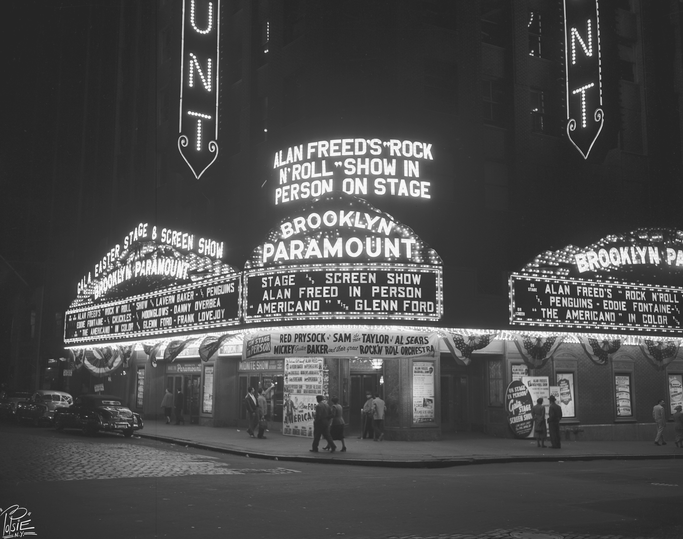
Rock & roll was born in the shadow of World War II. After 1945, the United States was the top military and economic power in the world. The nation boasted a booming economy, new technologies, new media, and liberty and justice for all. The American Century had arrived but not without potential problems. The nation had to adjust to rapid social and cultural change unleashed by the Second World War. And it had to contain the growing threat of communism. The historical forces swirling around in 1950s America set the stage for the coming of Elvis and the rock & roll craze.
No future history concerned with the life and times of the twentieth century can leave out rock n roll, wrote Herb Abramson of Atlantic Records back in 1956. Its that important. Abramson was right on the mark. From the very beginning, the new music was closely intertwined with the times. Rock & roll became one of the most significant cultural developments in postWorld War II America, reflecting and shaping everyday life and thought, yet its origins are shrouded in myth and legend.
Font size:
Interval:
Bookmark:
Similar books «Lets Rock!: How 1950s America Created Elvis and the Rock and Roll Craze»
Look at similar books to Lets Rock!: How 1950s America Created Elvis and the Rock and Roll Craze. We have selected literature similar in name and meaning in the hope of providing readers with more options to find new, interesting, not yet read works.
Discussion, reviews of the book Lets Rock!: How 1950s America Created Elvis and the Rock and Roll Craze and just readers' own opinions. Leave your comments, write what you think about the work, its meaning or the main characters. Specify what exactly you liked and what you didn't like, and why you think so.

